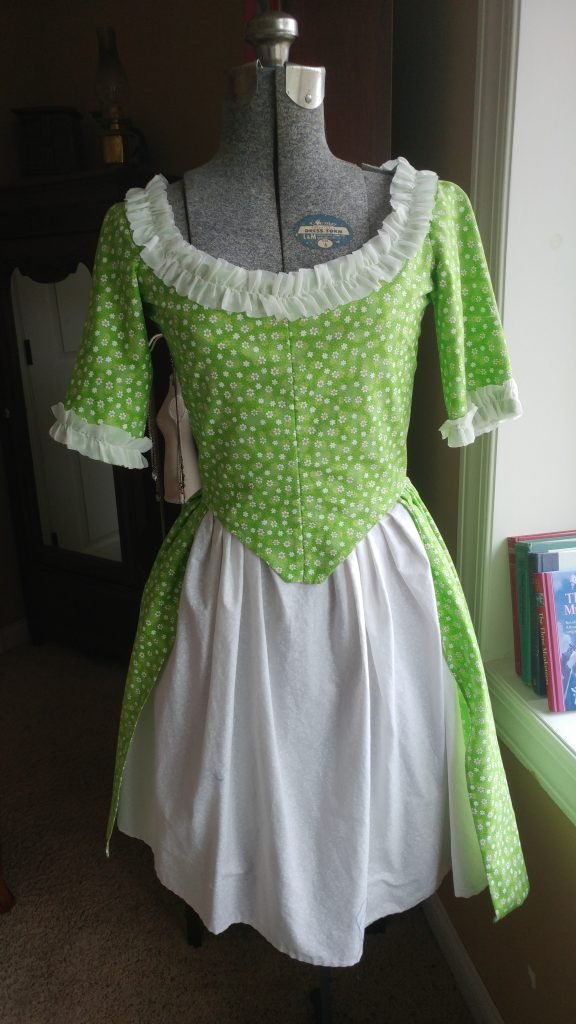
This dress is intended to be a dress inspired by the 18th century but be for more everyday wear. The pattern is one I drafted from Patterns of Fashion 1. The only deviance from the original pattern I made is the shorter skirt length.
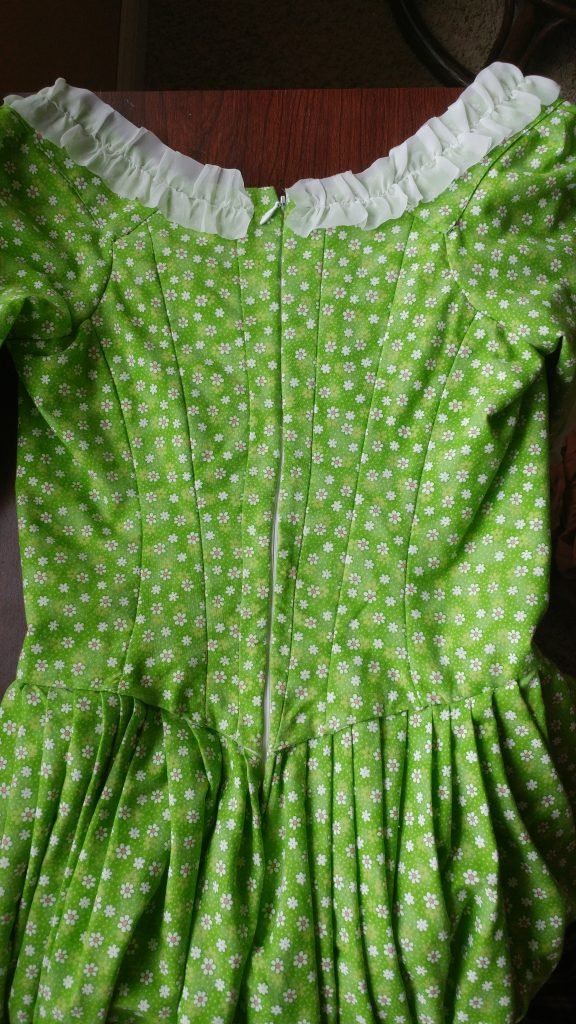
The back is made of multiple panels and one which has a tuck to make it appear like there is another panel. It closes with a zipper in the back unlike the originals which close in the front with pins.

The bodice is flat-lined which means that the outer fabric and lining are treated as one piece. The outer fabric is stiffened with fusible interfacing, although this would not have been done in the period as this would have been worn over stays which would have provided the stiffness. The edges are felled down to prevent fraying. The raw edges were not felled to prevent bulk.
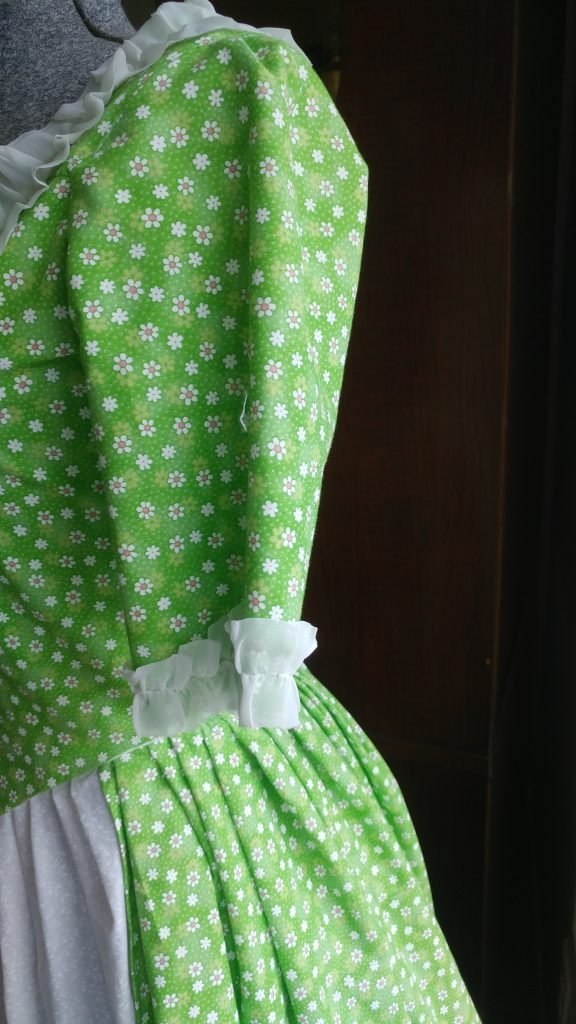
The sleeves of the 18th century were not sewn in like they are today. They would be sewn first to bodice armscye then sewn to the shoulder strap lining with several pleats at the back. Then the outer shoulder strap would be sewn on top of the lining and at the same time conceal the raw edges. This provided the fashionable 18th century shape of the shoulders being pulled back.
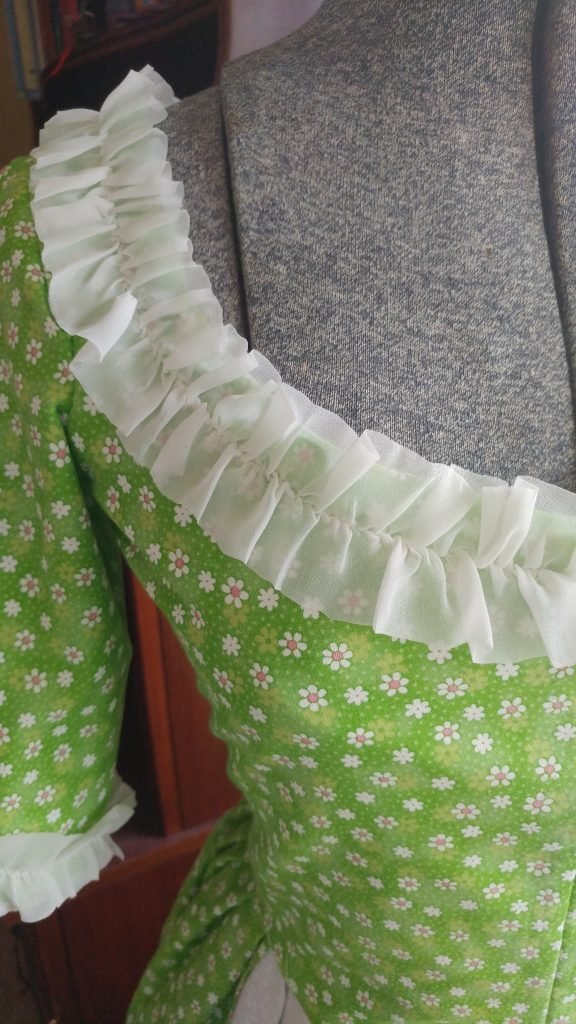
The trim was made by cutting two inch strips of cream chiffon them doing whip gathers down the center. The edges were fray checked since polyester chiffon cannot be easily roll-hemmed with out it fraying into oblivion. Though obviously people in the 18th century did not have fray check. The trim was added to the neckline and the sleeve edges.
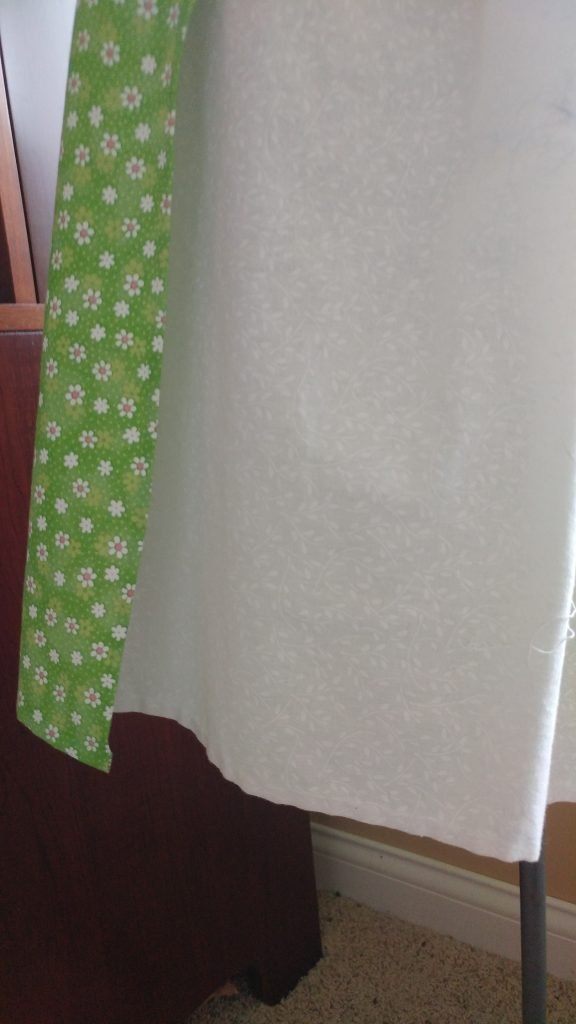
The front has is cut away to reveal the white layer underneath. This was common in the 18th century especially with court gowns. Then it would have been a separate garment under the dress but for mine it is connected at the side seam.
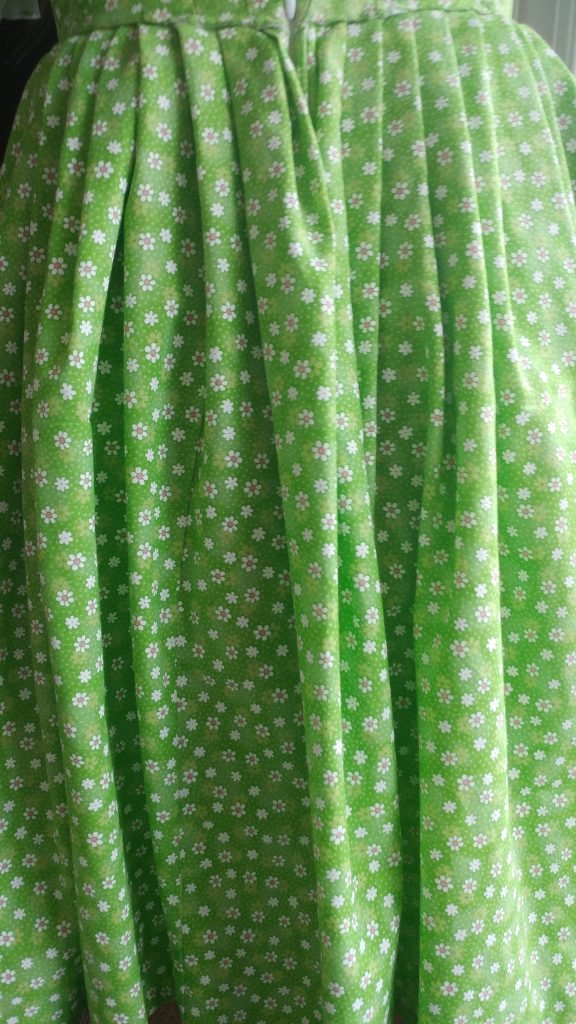
The skirt is knife pleated into the bodice and they are whipped together from the inside. Then the garment is completed.